Piriformis Syndrome: Physiotherapy Treatment, Exercise
Table of Contents
What’s piriformis syndrome?
Piriformis Syndrome is a condition whereby the sciatic nerve is pressed against the piriformis muscle and can cause pain and numbness in the back and buttocks. The syndrome is mainly characterized by pain in the buttock region and pain that radiates into the lower limb. There can be other symptoms such as numbness, weakness, and problems with bowel and bladder function. The condition is caused by compression of the sciatic nerve due to a condition known as “piriformis syndrome”.
The piriformis muscle is a small muscle that attaches to the hip and runs deep into the buttock area. The sciatic nerve passes right next to this muscle and can become entrapped under it, resulting in Piriformis Syndrome. This is a condition that causes pain that radiates from the hip down the leg. The pain can be very intense and can interfere with walking, sitting, and other daily activities.
This muscle helps with rotating your leg outward and with keeping your balance when you are standing on one leg. In most cases, piriformis syndrome is a result of a tight or spastic piriformis muscle, which can occur after an injury. In some cases, it may be a result of a structural defect or a condition called diastasis symphysis pubis, which is a separation of the pelvic bones.
Piriformis muscle Anatomy:
The piriformis muscle is a small muscle of the gluteal region in the human body. It is located deep in the hip and is a part of the gluteal group of muscles. The muscle is triangular in shape and arises from the posterior surface of the sacrum and coccyx, and from the anterior surface of the capsule of the hip joint. It is inserted into the greater trochanter of the femur. The Piriformis Muscle action is external rotation, abduction, and partial extension of the hip.
The sciatic nerve generally pass through the pelvis below the belly of the muscle, however many other variations may also exist.
Piriformis syndrome causes:
Piriformis syndrome can occur one or more causes of the following :
- Anatomical variation cause, with variations eg. split piriformis muscle, split sciatic nerve, or an anomalous sciatic nerve path.
- Injury to the buttocks-Hip area.
- Piriformis muscle spasm.
- Post-surgical injury eg. Hip joint replacement
- Lumbar and sacroiliac joint pathologies
- Overuse of Piriformis muscle and Hip Joint.
- Tightness of the muscles due to altered bio-mechanics of the lower limb
- Micro-injury may also result from overuse of the piriformis muscle, eg. long walking or running or by direct compression.
- Hypertrophy of piriformis muscle.
- Sacro-iliac arthritis
- Bursitis of the piriformis muscle
- “wallet neuritis”, which is a repetitive trauma caused by long sitting on hard surfaces.
- The excessive Hip movement mainly adducts and internally rotates during weight-bearing activity, due to weakness of the gluteal muscles, a greater eccentric load may be transferred to the piriformis muscle.
- A fraction of the group of people is at high risk, mainly are skiers, truck drivers, tennis players and long-distance bikers.
- After surgery to laminectomy:- Abscess, hematoma, myositis.
- Klippel-Trénaunay syndrome.
- Intragluteal injection.
- Sciatica – Neurinoma of the sciatic nerve.
Piriformis syndrome symptoms and signs:
Sciatica Radiating pain in down the back of the thigh, calf and foot, with tenderness in the buttock region are most commonly symptom’s are seen.
Other associated common sign and symptom’s are:
- Tingling numbness in the Back of the hip may radiating down to the leg.
- Tenderness in the buttocks
- Difficulty in long sitting comfortably
- Low Back pain.
- Sciatica Radiating pain.
- Hip joint stiffness.
- Difficulty in long distance walking.
- Swelling in the Ankle/legs if conditions are worsen.
- Disturbances of sexual life have also been seen
- There may be pain get worse with activity eg. long sitting or walking, squatting hip adduction, and internal rotation movement.
In most severe serious cases, the radiating pain in your buttocks and legs can be worse and may become disabling. You may become unable to complete basic, everyday tasks, eg. squatting, long sitting, and walking.
Diagnosis:
Diagnosis of Piriformis syndrome are done through mostly Physical examination by a Physiotherapist/doctor and Investigation By MRI / CT Scan, X-Ray, and EMG studies.
Investigation:
Radiographic X-ray studies have limited diagnosis importance.
However common antero-posterior x-ray (AP View) of the pelvis and hips, lateral views of the hips of x-ray, and/or CT Scan or MRI of the lumbar spine are recommended to rule out the other possible cause that the symptoms experienced by the patient originate from the lumbar spine or the hip region.
Electromyography (EMG) study may be also useful in differentiating PS from other possible conditions, such as intervertebral disc prolapse. Intervertebral nerve root compression will cause EMG abnormalities in muscles proximal to the piriformis muscle. In patients with piriformis syndrome mostly, EMG results will be normal for muscles proximal to the piriformis muscle and abnormal for muscles distal to it.
Physical examinations that include active movements, such as the FAIR test, may have a higher specificity and value than other available tests for the diagnosis of piriformis syndrome
PHYSICAL EXAMINATION:
A complete Medical-neurological history and physical assessment of the patient is important for a proper diagnosis. The physical examination should have the following key points:
A Physical structural examination with special attention to the lumbar spine, pelvis, and sacrum, as well as any leg length discrepancies.
Diagnostic tests.
Deep-tendon reflex testing, strength, and sensory examination testing.
Test for piriformis syndrome:
Palpation:
The patient reports sensitivity during palpation at the greater sciatic notch, in the region of the sacroiliac joint, or over the piriformis muscle belly. It is possible to detect the spasm of the Piriformis muscle by careful, deep palpation.
With deep digital palpation in the gluteal and retro-trochanteric area, there may be tenderness and pain with an exacerbation of tightness and leg numbness.
Pace sign:
In this test, Resisted abduction and external rotation of the hip in a sitting position is painful and weakness. A positive test is occurs in 46.5% of the patients with piriformis syndrome.
Lasèque sign / Straight Leg Raise Test:
The patient reports increased radiating pain in the buttock and leg pain during passive a straight leg raise performed by the examiner.
Freiberg sign:
In rhis test -Involves pain and weakness on passive forced internal rotation of the hip in the supine position. The pain is thought to be a result of passive stretching of the piriformis muscle and pressure placed on the sciatic nerve at the sacrospinous ligament. Positive in 56,2% of the patients.
Freiberg sign :
Piriformis stretching – Painful flexion-adduction-internal rotation from Hip joint.
Beatty’s maneuver:
In this test – An active movement that involves elevation of the flexed leg on the painful side, while the patient is side-lying position on the asymptomatic side. The abduction causes deep buttock pain in patients with Piriformis Syndrome, while low back and leg pain in patients with lumbar disc disease.
The Hughes test:
External isometric rotation of the affected lower limb following maximal internal rotation may also be positive in patients.
Hip Adbuction Test:
The patient lies on the side lying position with lower leg flexed to provide support and the upper leg straight, in line with the trunk. The examiner may stands in front of the patient at the level of the feet and observes (no hands on) as the patient is asked to abduct the leg slowly.
Normal : Hip abduction to 45°.
Abnormal : if hip flexion occurs (indicating TFL shortness) and/or leg externally rotates (indicating piriformis shortening) and/or ‘hiking’ of the hip occurs at the outset of the movement (indicating quadratus overactivity and therefore, by implication, shortness).
Patients with PS may also present with gluteal muscle atrophy, as well as shortening of the limb on the affected side.
In chronic cases muscle hypotrophy is seen in the affected side of Body.
Trendelenburg sign may also be positive.
Piriformis syndrome treatment:
Piriformis syndrome treatment mainly are Medical also called a conservative line of treatment, Physiotherapy Treatment and last option is Surgical treatment.
Medical Treatment:
Medical treatment for PS are mainly NSAIDs (non-steroidal anti-inflammatory agents), muscle relaxants and neuropathic pain medication), Physiotherapy treatment, active lifestyle modifications with avoiding activities that increase your pain and other symptoms and Proper rest.
Use of ice pack and hot pack on the Back side of Hip or legs. Cover an ice pack in a cotton towel so you don’t use the ice pack directly touching your skin. Keep the ice on for 12 to 15 minutes. Then also use a hot pack for about the same time. Try that every 2 to 3 hours to help relieve the pain and spasm. You may relieve pain if you use alternate ice and heat pack on your buttocks or legs.
If Medicine are not responds well then Injections of local anaesthetics, steroids, and botulinum toxin into the Piriformis muscle are use.
The Doctor’s should be familiar with anatomical variations and the limitations of techniques. An ultrasound guided injection technique has also recently been used. This technique has been shown to have both diagnostic and therapeutic importance in the treatment of PS.
If you still not able to get relief, you may referred to surgery to release pressure of the piriformis muscle on the sciatic nerve. However, this is rarely needed.
Physiotherapy Treatment:
Physiotherapy Treatment:
Physiotherapy treatment are pain relieving electrotherapy modalities such as Ultrasound Therapy, TENS/IFT, soft tissue mobilization, piriformis muscle stretching/strengthening, use of hot packs or cold packs.
The treatment also focused on functional exercises therapy for the hip goal is to strengthen the hip extensors, abductors and external rotators, as well as correction of posture, incorrect movement patterns .
To achieve good results, the patient usually follows 4 TO 5 session weekly for nearly 6 to 8 weeks.
Ultrasound Therapy: Start with an ultrasound treatment: 1.0-1.5 W/cm2, for 8-10 minutes. Apply the ultrasound gel in area the piriformis muscle from the conjoint tendon to the lateral edge of the greater sciatic foramen.
IFT / TENS: If Radiating pain is present then Select IFT (Interferential therapy) to block pain.
Hot Pack / Cold Pack: Before starting stretching of the piriformis muscle, use hot packs or cold pack for 10-15 minutes in painful area. The use of hot/cold pack before exercise is very useful to reduce pain and muscle spasm.
The Physiotherapist can also give few tips to avoid an aggravation of the symptoms. This are:
- Avoid prolonged sitting position in day to day activities.
- Stand and walk regularly to avoid muscle atrophy.
- Make regular intervals when driving to stand and stretch.
- Avoid jerky movement to the gluteal region.
- Avoid any painful activities.
- Regular stretching exercise is recommended to avoid the recurrence of the piriformis syndrome.
You can do other exercises and treatments at home including:
- Rolling side to side with flexion and extension of the knees while lying on each side
- Rotate side to side in standing position with the arms relaxed for 1 minute every few hours
- Take a regular warm bath
- Supine Lying position flat on the back and raise the hips with your hands and pedal with the legs like you are riding a bicycle, Knee bends, with as many as 6 repetitions every few hours.
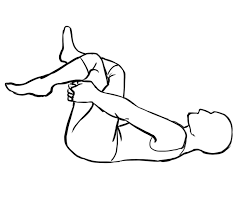
Piriformis syndrome exercises:
Gluteal stretch:
Supine Lying position on your back on soft mat with both knees bent, rest the ankle of one leg over the knee of your other leg. Hold the thigh of the bottom leg and pull that knee toward your chest. You will feel a gentle stretch along the buttocks and possibly along the outside of your hip on the top leg. Hold this for 8 to 12 seconds. Repeat 2-3 times.
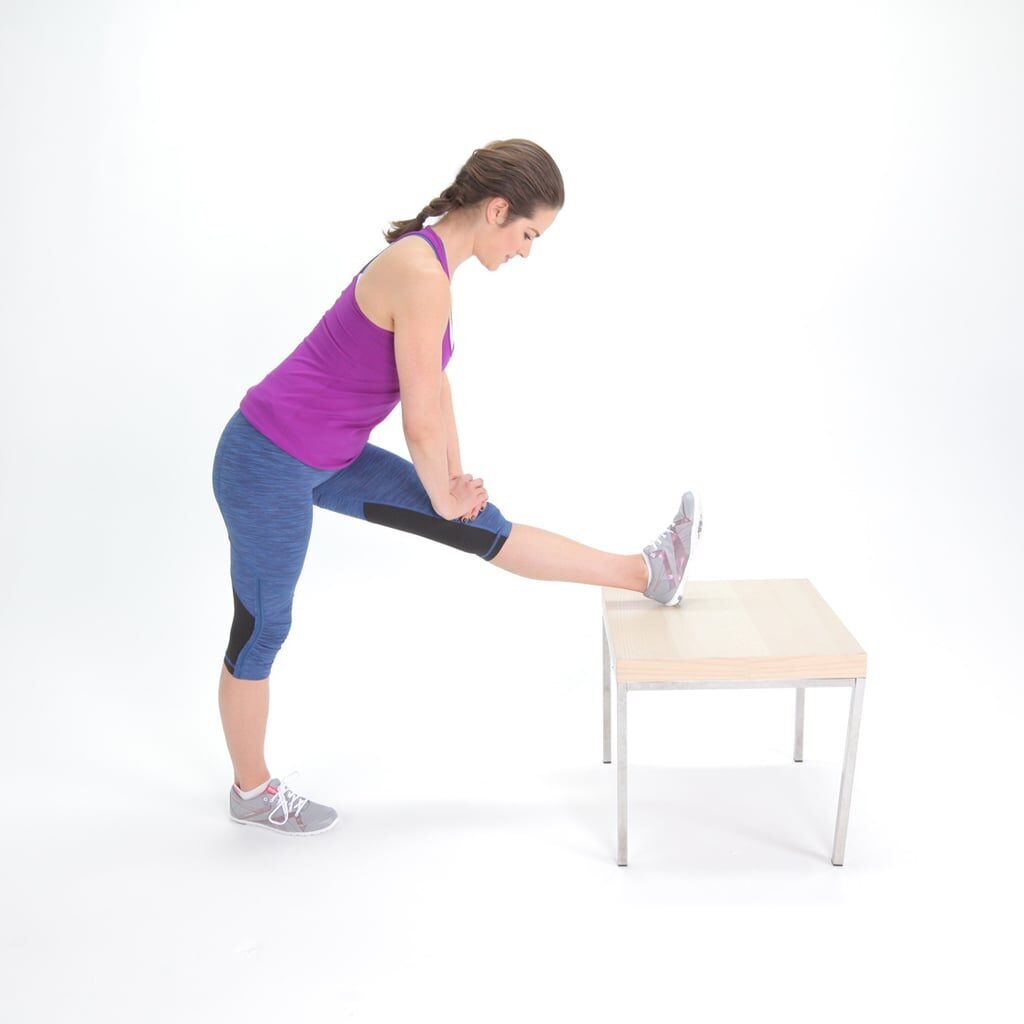
Standing hamstring stretch:
Place the heel of your affected leg on a stool about 12-15 inches high. Make sure your knee keep straight. Lean forward, flex at the hips until you feel a gentle stretch in the back of your thigh. Make sure you do not move your shoulders and bend at the waist when doing this exercise or you will stretch your lower back instead of your leg. Hold the stretch for 8 to 10 seconds. Repeat 3 times.
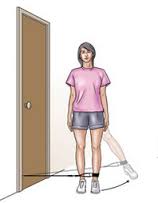
Resisted hip abduction:
In Standing position sideways near a doorway. Use elastic theraband around the ankle on your leg of affected side which is away from the door. Knot the other end of the theraband and close the knot in the door. Abduct your leg out to the side, keeping your knee straight. Return to the starting position. Do 8 to 10 repetitions and gradually increase repetitions.
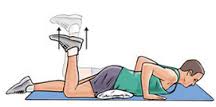
Prone hip extension (Knee flex):
Prone Lying position on your stomach with a small pillow underneath your hips. flex one knee of the affected side, then Contract your gluteal muscles and lift your leg off the floor about 6 inches. Keep the normal leg on the floor straight. Hold for 5 seconds. Then lower your leg and relax. Do 8 to 10 repetitions and gradually increase repetitions.
Quadruped arm/leg raise:
Take Quadruped position on your hands and knees. Tighten your Back muscles to keep your spine straight, at the same time, raise one arm and the opposite leg away from you. Hold this position for 5-10 seconds. Gradually Lower your arm and leg slowly and do the same on opposite sides.
Partial sit-up exercise:
Supine Lying position on your back on soft mat with your knees bent and keep your feet flat on the floor. Contract your abdomen muscles, Raise your chin towards your chest. With your hands stretched out in front of you, flex your upper body forward until your shoulders clear the floor. Hold this position for 2-5 seconds, Then gradually Relax. Repeat 8-10 times. Build to 3 sets of 10. To increase difficulties yourself, grasp your hands behind your head and keep your elbows out to the side.
Stretch piriformis supine crossed leg:
Supine Lying position on back on soft mat, affected knee bent, ankle across opposite leg. Place hand on hip to keep pelvic area at on floor. Grasp knee and pull thigh across while actively trying to move right knee inward until a gentle stretch is felt in the affected buttocks area. Relax and repeat. Perform 1 set of 8-10 repetitions, twice a day. Hold exercise for 8-10 seconds.
Stretch Piriformis Long sitting:
In a long Sitting position with the affected knee bent, ankle to the outside of the left leg. Grasp the knee and pull the thigh across the chest toward the opposite shoulder. Gradually Relax. Perform 1 set of 10 repetitions, twice a day. Hold the exercise for 8-10 seconds.
Piriformis syndrome surgery:
Surgical treatment should be recommended only when medical treatment has failed and the symptoms are becoming worse and disabling.
Surgical release with tenotomy of the piriformis muscle tendon to relieve the nerve from the pressure of the tight muscle has shown in immediate pain relief, as reported by several surgeons.
The obturator internus muscle should be considered as an other possible cause of sciatica pain. However, the diagnosis of the obturator internus syndrome can only be made by differentiate with other possible causes of sciatic pain, which is similar to the piriformis syndrome is diagnosed.
Surgical release of the internal obturator muscle can result relief in pain in patients with retro-trochanteric pain syndrome and should be recommended only if medical/physiotherapy treatment fails.
The postoperative treatment are partial weight-bearing using crutches for 2-3 weeks and active range of motion (ROM) exercises. The above surgical treatment has given short-term results.

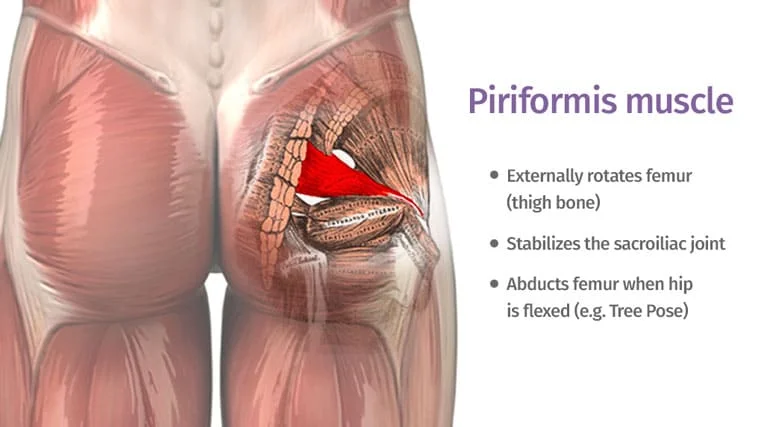

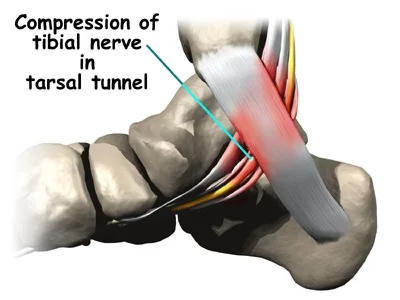

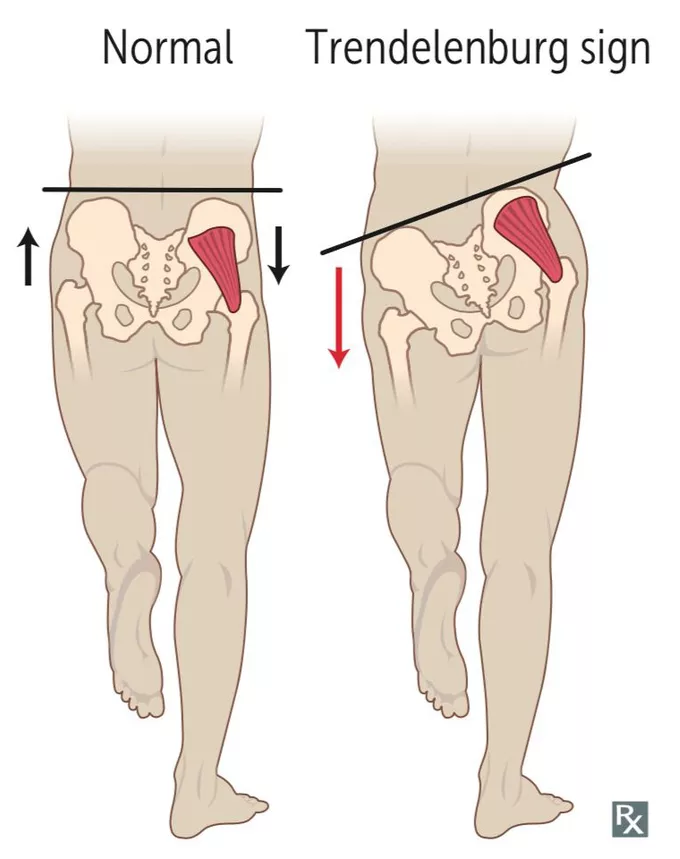
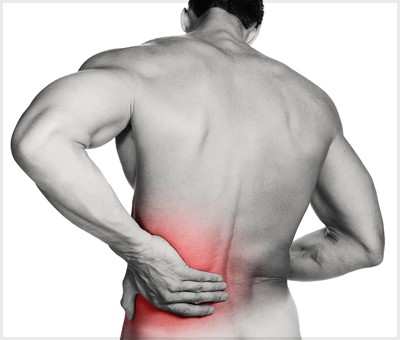
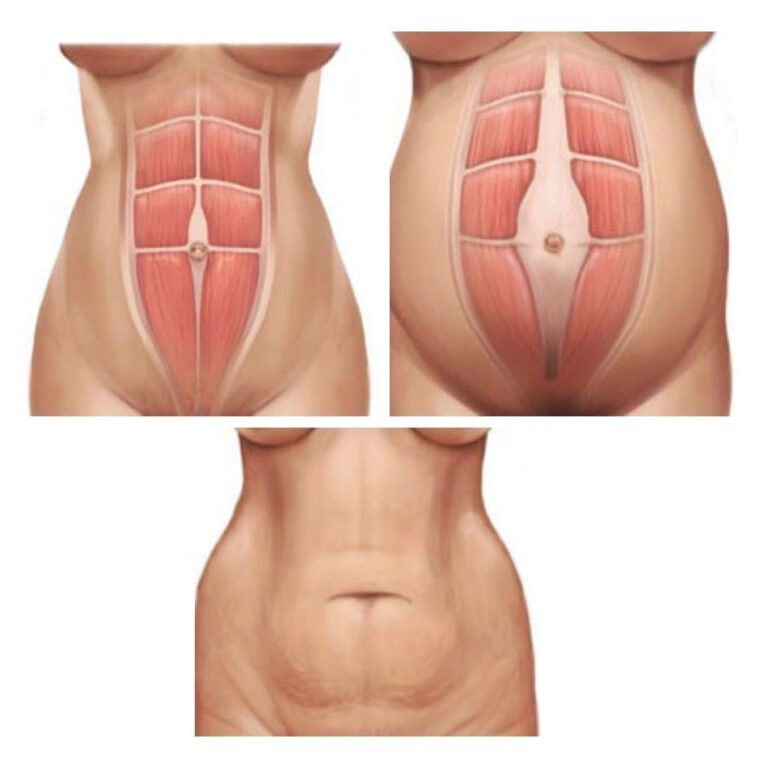
6 Comments